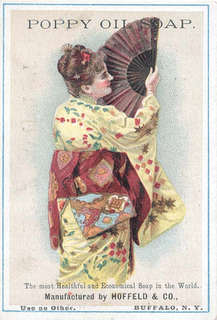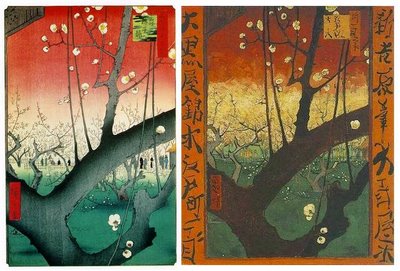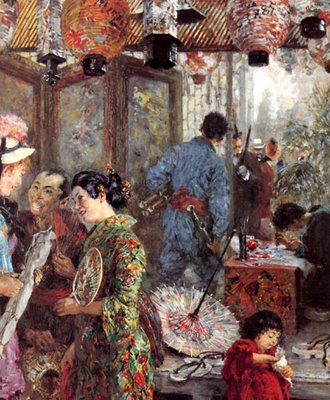
ascinating, sarcastic, brilliant, argumentative, genius, james mcneill whistler brought to the art world new perspectives, new inspiration, and new headaches.
i get sad reading the reviews he got, excerpts of which are included in his collected papers,
the gentle art of making enemies. "another crop of mr. whistler's little jokes." "so far removed from any accepted canons of art as to be beyond the understanding of an ordinary mortal." and on and on and on......
but the arrogant if insecure artist wrote letters to the editor combating these reviews just as endlessly.

he didn't limit his fights to those with critics. he was a man who
knew what was right, and anyone else be damned. when hired to do a simple assist at room decoration he instead repainted the entire room, including over leather walls, making of it exactly what it
should be. unfortunately, the owner of the house disagreed, and refused to pay whistler the total agreed amount. petulantly, and yet with glory, this grand peacock mural, inspired by
utamaro's print, was created for the room, parodying he and the owner: the proud and the pauper.
(more on this to come)and in doing so created one of art nouveau's most prevalent symbols.
 well, i don't wish to call any- one a liar, but per- haps Iida Takashimaya, who embroidered a peacock on a silk kimono meant for export, despite the fact that there were no peacocks in japan, could explain this image.
well, i don't wish to call any- one a liar, but per- haps Iida Takashimaya, who embroidered a peacock on a silk kimono meant for export, despite the fact that there were no peacocks in japan, could explain this image.














